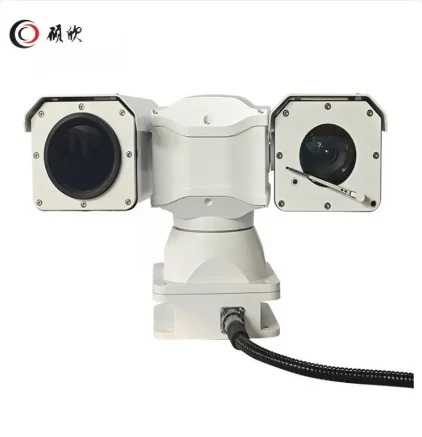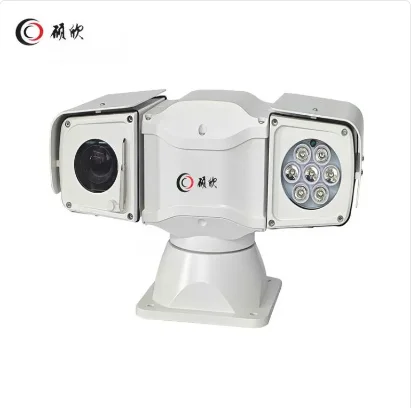Introduction to Surveillance Cameras for Low-Light Areas
You often deal with tough monitoring tasks in remote outdoor settings, where darkness or bad weather hides threats. Low-light areas pose real challenges: dim nights, foggy conditions, or sudden storms can obscure vital details in places like border zones, power substations, or forest perimeters. Standard cameras fail here, missing intrusions or fires that start far away, beyond 150 meters. You need gear that pierces the gloom for clear, reliable views to protect critical infrastructure or support mobile patrols.
Specialized surveillance cameras tackle these issues head-on. They use advanced sensors for sharp images in near-total darkness, infrared lights to illuminate distant scenes, or thermal tech to detect heat signatures through obstacles. These tools ensure you spot risks early, whether on a police vehicle during night patrols or at a remote electrical facility. For top-tier options that blend durability with cutting-edge features, check out Shuoxin, a leader in rugged, high-performance surveillance. Their focus on long-range PTZ designs suits demanding outdoor ops, from emergency commands to road inspections. With years in the game, they deliver cameras that withstand extreme temps and shocks while providing unmatched clarity. This keeps your operations secure and efficient.
Shifting from basics, consider how these cameras enhance security in low-visibility scenarios. They not only capture footage but also integrate smart alerts to notify you instantly of anomalies, bridging the gap to the key traits that define the best models.
Key Features to Look for in Low-Light Surveillance Cameras
You want cameras that perform when light fades, so focus on specs that guarantee visibility over long distances. Start with low minimum illumination ratings. Aim for color capture at 0.001 Lux or less, and black-and-white at 0.0005 Lux or better. This lets you see details in moonless nights or shadowed expanses, crucial for monitoring power lines or border fences from afar.
Night vision tech comes next. Infrared LED illumination extends reach to 150 meters or more, lighting up scenes without visible glow. For zero-light spots, thermal imaging detects heat differences, spotting people or vehicles through fog or smoke. Look for uncooled detectors with high resolution, like 640×512 pixels, and sensitivity under 35mK for precise thermal maps.
Optical and digital zoom matter too. A 33x optical zoom or higher, with lenses from 5.5mm to 180mm, lets you zero in on distant targets, say 200 meters out during forest fire watches. Fast zoom speeds, around 3.5 seconds from wide to tele, keep you responsive in dynamic situations like vehicle pursuits.
Durability seals the deal. Seek IP66 ratings for dust and water resistance, operating ranges from -35°C to +55°C, and impact tolerance over 4G. These withstand vibrations on special vehicles or harsh weather at remote sites.
Smart features add value. Intrusion detection, face recognition, and audio alerts automate monitoring, reducing false alarms in vast outdoor areas. ONVIF support ensures easy integration with your systems.
Control options like RS485 with PELCO protocols allow precise PTZ movements: 360° endless pan and ±90° tilt for full coverage. This flows into why certain models stand out, as they combine these elements seamlessly for your needs.
Top Recommendations: Best Cameras for Low-Light Areas
You deserve reliable picks that excel in demanding low-light outdoor surveillance. Based on proven performance, here are standout PTZ models tailored for long-range tasks.
150M Night Vision Vehicle PTZ Camera
This model shines for mobile setups, like police law enforcement or road patrols. It boasts 1920×1080 resolution from a 1/2.8” progressive scan CMOS sensor, capturing crisp HD video. In low light, it delivers color at 0.001 Lux and black-and-white at 0.0005 Lux, paired with 150m IR illumination for clear night views over vast distances.
The 33x optical zoom (5.5-180mm lens) offers a 60.5° to 2.3° field of view, ideal for scanning wide borders or narrow substation paths. Zoom happens in about 3.5 seconds, keeping you ahead in fast-moving scenarios. PTZ controls provide 360° rotation and ±90° tilt, with preset speeds up to 100°/s pan and 60°/s tilt, supporting 256 positions and 8 tracking paths.
Built tough, it handles -35°C to +55°C, 90% humidity, and 4G impacts, with optional shock absorbers for vehicle mounts. Smart detections include cross-border alerts, gathering recognition, and face detection, all via ONVIF. Defrost and defog features ensure reliability in sudden weather shifts. Weighing 7kg, it’s perfect for emergency command vehicles. Explore more on this 150M Night Vision Vehicle PTZ Camera.
Building on IR strengths, consider advanced dual-sensor options for even tougher conditions.
Bi-Spectral Long-Range Thermal Imaging PTZ Camera

For ultimate low-light prowess, this bi-spectral unit combines visible and thermal imaging. The visible side uses a 1/2.8” CMOS for 2MP HD, with illumination down to 0.0005 Lux color and 0.0001 Lux black-and-white. A 52x optical zoom (6.1-317mm lens) covers 61.8° to 1.6° views, reaching far for forest fire detection or power grid oversight.
The thermal detector, uncooled vanadium oxide at 640×512 resolution, senses in 8-14μm bands with <35mK sensitivity. A 50mm lens (options up to 100mm) spots heat at extreme ranges, through darkness or haze. Fourteen false-color modes, like Rainbow or Iron Red, highlight threats vividly.
PTZ matches the prior model: 360° pan, ±90° tilt, fast presets, and RS485 control. It weighs 8kg, with IP66 protection and wiper support. Smart features mirror the IR version, plus thermal-specific alerts. This suits border security or substation monitoring, where heat detection prevents disasters. Check details on the Bi-Spectral Long-Range Thermal Imaging PTZ Camera.
These recommendations highlight how superior features translate to real advantages, but selecting the right one depends on your specific setup.
How to Choose the Right Low-Light Surveillance Camera
You start by evaluating your site. For mobile patrols on police vehicles, prioritize shock resistance and quick PTZ. In static spots like border outposts, emphasize thermal range for all-weather detection.
Decide on tech: IR suits cost-effective 150m+ visibility in partial light, while thermal excels in absolute dark or obscured views, like smoky forests. Match zoom to distance—higher optical for ultra-long ranges in power facility surveillance.
Check compatibility: ONVIF and RS485 ensure it fits your network. Budget for upgradable firmware to future-proof against evolving threats.
Test in real conditions: Verify low Lux performance, zoom fluidity, and resilience to temps or vibrations. This leads to why these choices offer lasting value in your operations.
Why Choose These: Product Advantages and Superior Value
You gain from innovations like high-res sensors and extended IR/thermal reaches, ensuring accurate detection in low-light over 150m. AI analytics cut false positives, vital for remote emergency systems.
Harsh-environment builds—IP66, wide temp ranges, high impact tolerance—mean reliability in outdoor demands, from urban enforcement to special inspections.
Versatility fits applications: mobile vehicle checks, fire commands, or road patrols, with custom options for your needs. These edges provide security and efficiency you can count on.
Service and Contact Information
You benefit from expert support: installation advice, maintenance, and tailored tweaks for optimal performance. Reach out for demos or quotes via contact us—our team responds promptly to your queries.
FAQ
Q: How far can these cameras see in complete darkness?
A: The IR model illuminates up to 150m with clear details, while the thermal version detects heat signatures even farther, depending on lens options, ideal for border or forest monitoring.
Q: Are these cameras suitable for extreme weather?
A: Yes, both operate from -35°C to +55°C, with IP66 ratings and defog/defrost features, ensuring performance in rain, fog, or cold during outdoor patrols.
Q: What integration options do they offer?
A: They support ONVIF for easy connection to your systems, plus RS485 with PELCO protocols for precise control in emergency setups.


